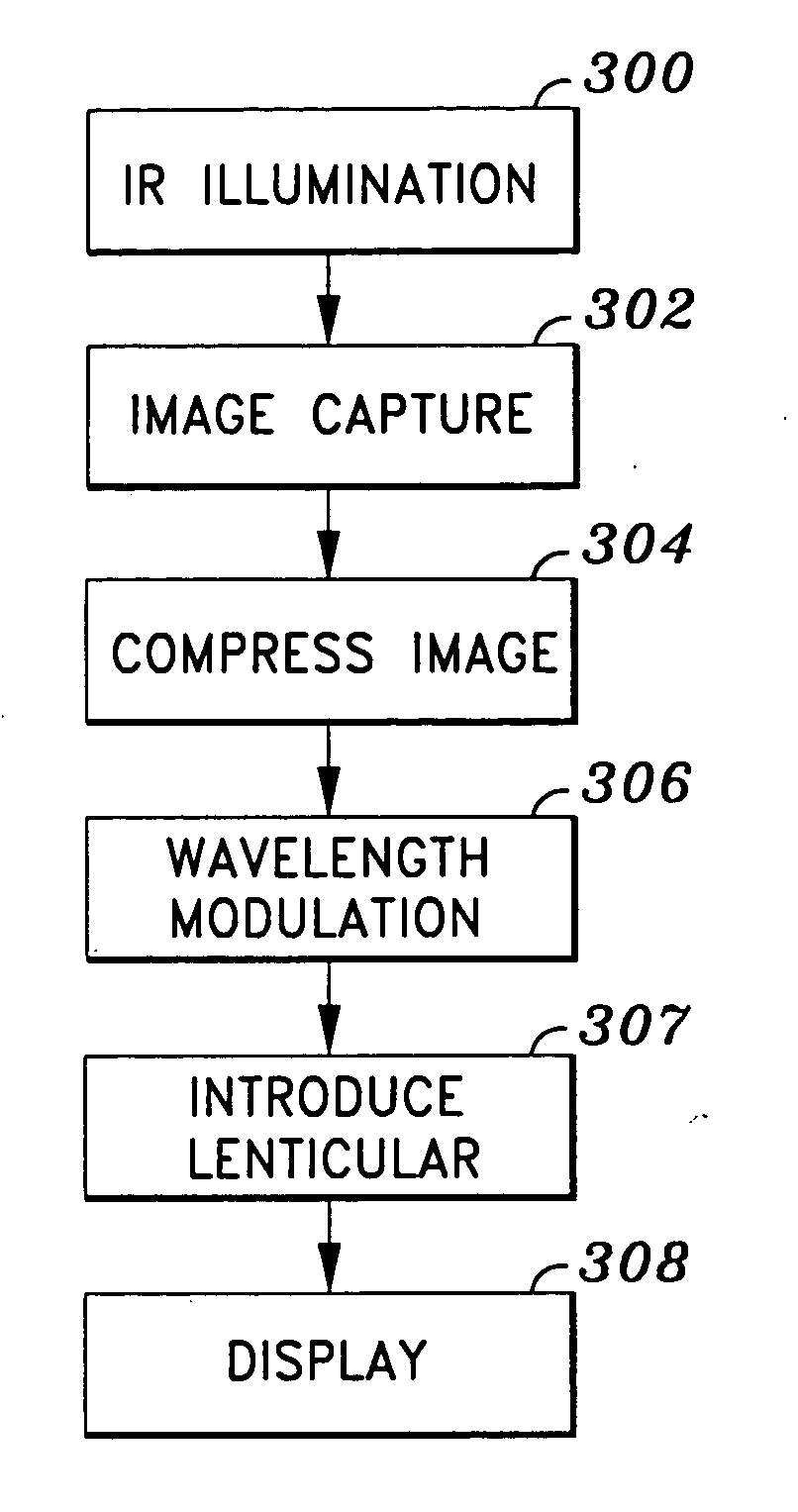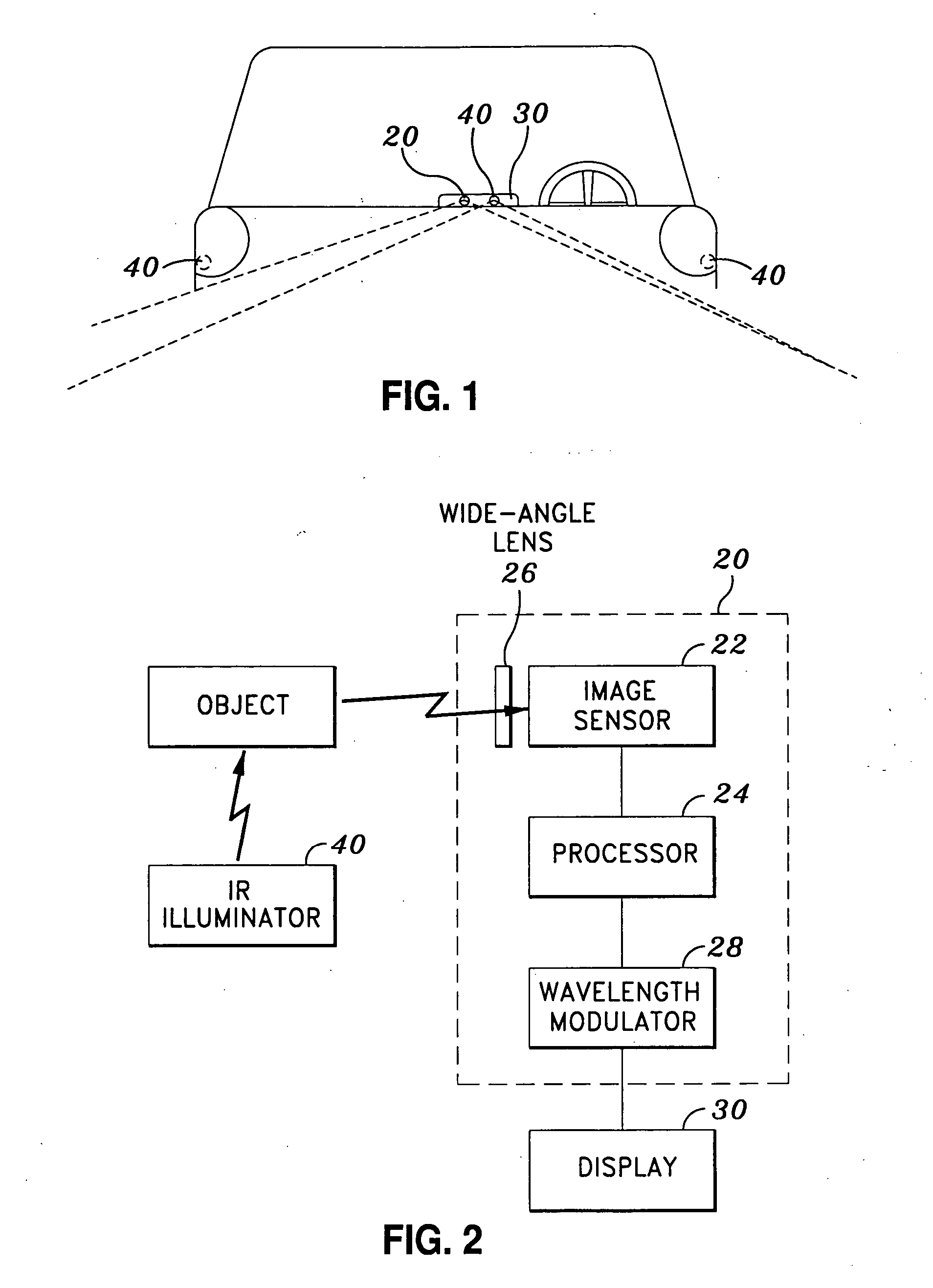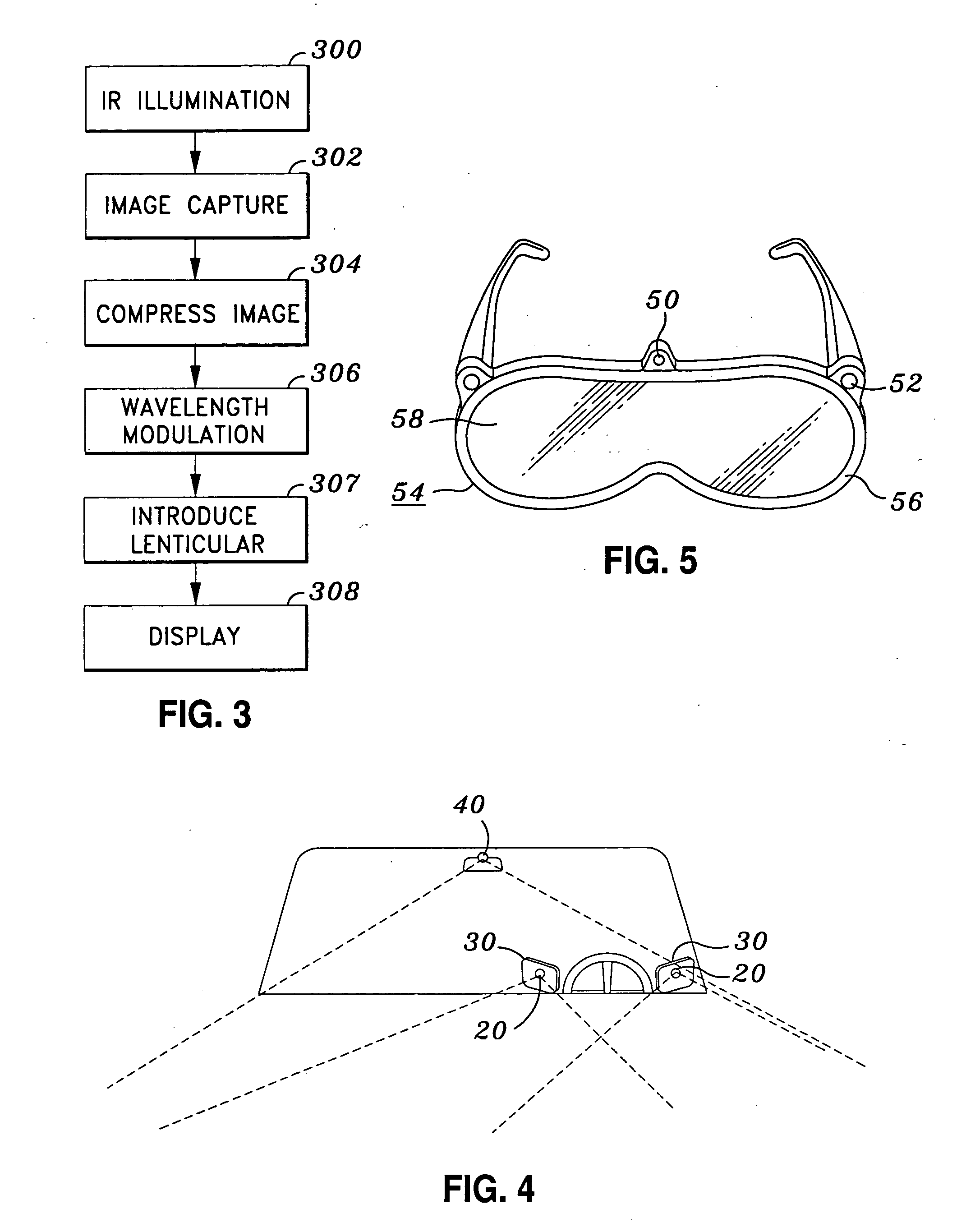Device and method for eye problems
a technology for eye problems and devices, applied in the field of devices and methods for improving vision, can solve problems such as numerous physical injuries, decreased night vision, and inability to see dimly lit places such as movie theaters
- Summary
- Abstract
- Description
- Claims
- Application Information
AI Technical Summary
Benefits of technology
Problems solved by technology
Method used
Image
Examples
Embodiment Construction
[0018] Referring now to the drawings wherein the showings are for purpose of illustrating preferred embodiments of the present invention only, and not for purposes of limiting the same. As shown in FIGS. 1 and 2, the present invention provides a vision improvement device which incorporates a camera 20 and a display 30 in electric communication with each other. The camera 20 is preferably installed in a vehicle 10 at a position operative to capture a wide angle of view in front of the driver without obstructing the view of the driver. To obtain a wide angle and unobstructed of view, the camera 20 may also be mounted to the vehicle 10 externally. The display 30 is either installed above or built in the dashboard 12 of the vehicle 10, such that the driver can glance at the display 30 without being distracted by moving his or her head.
[0019] The camera 20 includes an image capturing device 22 for scanning a predetermined area and capturing an image of the predetermined area in front of...
PUM
 Login to View More
Login to View More Abstract
Description
Claims
Application Information
 Login to View More
Login to View More - R&D
- Intellectual Property
- Life Sciences
- Materials
- Tech Scout
- Unparalleled Data Quality
- Higher Quality Content
- 60% Fewer Hallucinations
Browse by: Latest US Patents, China's latest patents, Technical Efficacy Thesaurus, Application Domain, Technology Topic, Popular Technical Reports.
© 2025 PatSnap. All rights reserved.Legal|Privacy policy|Modern Slavery Act Transparency Statement|Sitemap|About US| Contact US: help@patsnap.com



